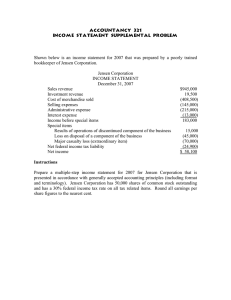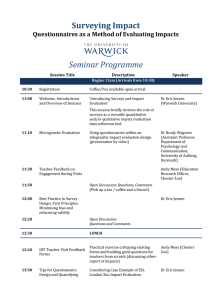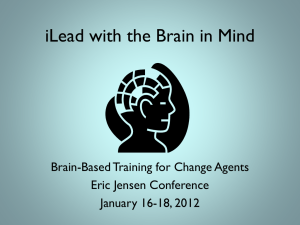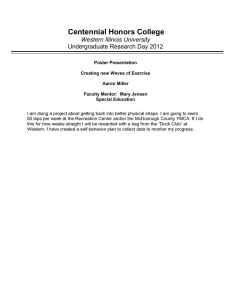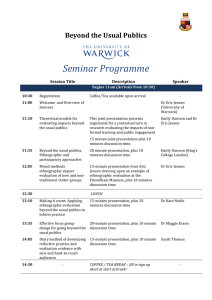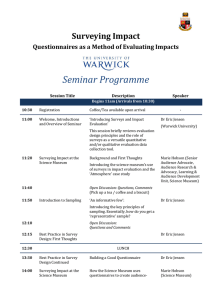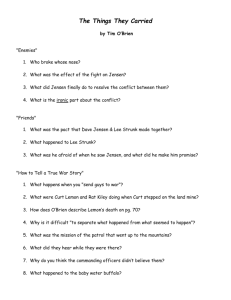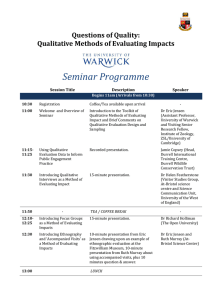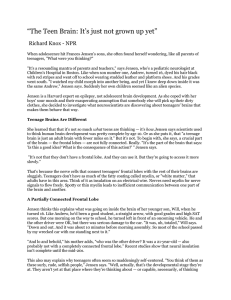Eric Jensen and Brain-Based Learning Teacher Resources Center for Accelerated Language Acquisition
advertisement
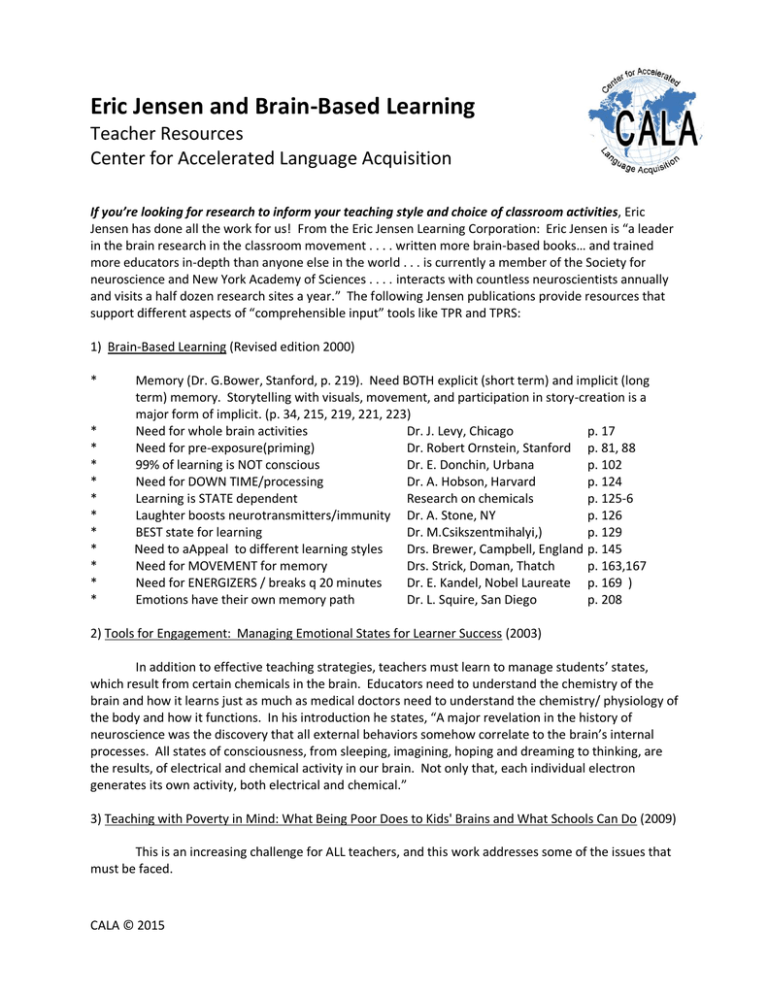
Eric Jensen and Brain-Based Learning Teacher Resources Center for Accelerated Language Acquisition If you’re looking for research to inform your teaching style and choice of classroom activities, Eric Jensen has done all the work for us! From the Eric Jensen Learning Corporation: Eric Jensen is “a leader in the brain research in the classroom movement . . . . written more brain-based books… and trained more educators in-depth than anyone else in the world . . . is currently a member of the Society for neuroscience and New York Academy of Sciences . . . . interacts with countless neuroscientists annually and visits a half dozen research sites a year.” The following Jensen publications provide resources that support different aspects of “comprehensible input” tools like TPR and TPRS: 1) Brain-Based Learning (Revised edition 2000) * * * * * * * * * * * * Memory (Dr. G.Bower, Stanford, p. 219). Need BOTH explicit (short term) and implicit (long term) memory. Storytelling with visuals, movement, and participation in story-creation is a major form of implicit. (p. 34, 215, 219, 221, 223) Need for whole brain activities Dr. J. Levy, Chicago p. 17 Need for pre-exposure(priming) Dr. Robert Ornstein, Stanford p. 81, 88 99% of learning is NOT conscious Dr. E. Donchin, Urbana p. 102 Need for DOWN TIME/processing Dr. A. Hobson, Harvard p. 124 Learning is STATE dependent Research on chemicals p. 125-6 Laughter boosts neurotransmitters/immunity Dr. A. Stone, NY p. 126 BEST state for learning Dr. M.Csikszentmihalyi,) p. 129 Need to aAppeal to different learning styles Drs. Brewer, Campbell, England p. 145 Need for MOVEMENT for memory Drs. Strick, Doman, Thatch p. 163,167 Need for ENERGIZERS / breaks q 20 minutes Dr. E. Kandel, Nobel Laureate p. 169 ) Emotions have their own memory path Dr. L. Squire, San Diego p. 208 2) Tools for Engagement: Managing Emotional States for Learner Success (2003) In addition to effective teaching strategies, teachers must learn to manage students’ states, which result from certain chemicals in the brain. Educators need to understand the chemistry of the brain and how it learns just as much as medical doctors need to understand the chemistry/ physiology of the body and how it functions. In his introduction he states, “A major revelation in the history of neuroscience was the discovery that all external behaviors somehow correlate to the brain’s internal processes. All states of consciousness, from sleeping, imagining, hoping and dreaming to thinking, are the results, of electrical and chemical activity in our brain. Not only that, each individual electron generates its own activity, both electrical and chemical.” 3) Teaching with Poverty in Mind: What Being Poor Does to Kids' Brains and What Schools Can Do (2009) This is an increasing challenge for ALL teachers, and this work addresses some of the issues that must be faced. CALA © 2015
